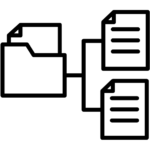The team dove into the product, architecture, and code — but skipped proper onboarding for tools and processes. Three months in, issues started piling up, and everyone realized they weren’t set up to succeed.

It had been a whirlwind of deadlines and handovers for the Project Manager. The Supplier Team had just taken over the product’s scope, architecture, and codebase from the client. With so much on their plate, onboarding the tools and processes had slipped into the background. It was an understandable oversight; after all, getting up to speed with the product seemed like the most critical task. But now, three months into the project, cracks were starting to show.
The PM noticed an unsettling trend. Bugs were being missed during code reviews, processes weren’t being followed effectively, and the team was losing precious time trying to figure out tools they hadn’t been trained to use properly.
The problem was clear—the Process & Tools onboarding hadn’t been effective, and it was starting to cost them. The PM thought back to the initial onboarding phase. At that time, the focus had been on tackling the immediate challenges: understanding the product’s architecture, getting familiar with the codebase, and coordinating with the client.
Tools and processes felt like a secondary concern. After all, they wouldn’t be fully appreciated until the team had to use them. But now, the gaps in onboarding were becoming a bottleneck.
That evening, the PM took their car for servicing. It had been making strange noises for a few days, and they knew it was time to get it checked. As they sat in the waiting area, they overheard the service manager speaking to another customer. The car had serious engine issues, but the customer also wanted polishing and minor detailing done. The manager calmly explained, “Let’s fix the engine first. Polishing can be done later. The car needs to be safe on the road first.”
It was a moment of clarity. The PM realized that onboarding could follow the same principle. Instead of overwhelming the Supplier Team with everything at once, they could split the onboarding into two phases: mandatory now and deferred later.
This would ensure the critical tools and processes were implemented immediately, while less urgent elements could be addressed after the team had stabilized. The next day, the PM called a team meeting. “We need to restructure how we onboard the Process & Tools framework,” they began. “Let’s categorize everything into two buckets: what’s mandatory and what can be deferred.”

Once the classification was done, the PM laid out the plan. The mandatory items would be onboarded immediately, with the PM overseeing the process to ensure no gaps were left. Deferred items, like advanced tools or secondary processes, would be revisited after three months. By that time, the Supplier Team would have settled into their roles, and additional training sessions could be conducted to bring them up to speed.
To keep things on track, the PM also introduced peer audits at every stage. This way, any compliance issues could be caught early, and the team could adjust as needed.
Over the next few weeks, the new approach started showing results. The mandatory onboarding gave the team a solid foundation. Developers were no longer wasting time trying to figure out basic tools, and processes like code reviews and version control were running smoothly.
By the time the deferred training sessions rolled around, the team was ready. With a stable understanding of their core responsibilities, they could now appreciate the value of advanced tools and processes. What had once felt like an additional burden was now seen as an enabler for better performance.
Three months later, the client reached out with feedback: “The difference is night and day. The throughput and quality have improved significantly.” The PM couldn’t help but smile. What had seemed like a minor issue at the start had turned into a major factor for success.
The results were clear. Thanks to the phased onboarding approach, the team’s efficiency improved across the board. The client reported a 5% increase in the overall quality of deliverables, with fewer bugs in the code and faster review cycles. The team was no longer bogged down by tools they hadn’t fully understood, and with the new structure in place, their confidence grew. It wasn’t just about getting things done—it was about doing them right from the start.

5%
This two-phase onboarding approach had not only solved immediate problems but had also future-proofed the team. Splitting onboarding into “mandatory now” and “deferred later” ensured that critical needs were met without overwhelming the team.
Sometimes, the simplest insights—like prioritizing the engine over the polish—can lead to the biggest breakthroughs.
How does your team handle onboarding? Let’s discuss in the comments!
Key Takeaway
Splitting onboarding of processes and tools into mandatory and deferred phases helps
the team focus on what’s essential early on and avoid issues later in the project.



